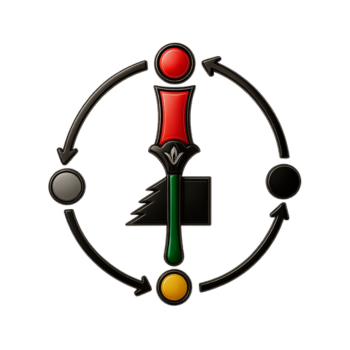-
Update: For the second time, I toured the hall of Kemetic artifacts at the Metropolitan Museum in New York with Mfundishi Jhuty. Took lots of photos and used my magnifying glass to look closely at small carved scarabs. The sculptural skills of the Kmtyw is mind blowing. Attached is a photo of a a wall fragment with beautifully inscribed mdr ntr. One day I’ll be able to read this. Loved learning that writing direction is from rt to left and top to bottom.
The group heard for the first time about the unwrapping parties held by the yurugu who crushed the bones of the dead Ancestors and added the powder to drinks thinking that it would heal their unhealthy bodies. We know how that turned out! One of the tour members remarked that this entire museum building is a loot display by grave robbers! ha! So true. 4 years ago ·
4 Comments-
I am still upset that I missed this.. what a wonderful experience! Did he translate some of the mdw ntr for you?
-
@makiyasmack maybe we can arrange to go during a weekday. yes, our guide translated a different stone, but he didn’t translate this piece. It would be amazing to have a tour focused specifically on reading everything on display.
What I noticed this time around is that the mdr ntr is carved into all sorts of surfaces. Seated statues have mdr ntr carved on their sides and backs! The hotep stone (huge stone for offerings – pix attached) has mdr ntr carved on all four the sides of the piece but it is very difficult to see. You have to kneel on the floor to see it clearly. Every surface of a wrapped ancestor, except for the linen covering, has mdr ntr written on it. The inside and outside of the wooden container, the inside and outside of the stone container.
What was NOT on display were the tools associated with all the objects; the looms used to weave the linen cloth, the carving tools used to make the tiny stone animals, the carving or stamping tools used to inscribe the mdr ntr in stones, the tools used to cut blocks of granite in quarries, surgery tools, jointery tools for furniture making, etc. A sister from London was in the group this time and she had been to the British Museum to see Kemetic artifacts and she also commented that there were no tools on display there either.
-
Yes that is a great idea because I need to see the work of our ancestors. As for the tools not being shown, why do you think that is?
-
I don’t know why related tools are not on display. In most science museums you commonly see the object, the tool and info on the maker. But at the MET there isn’t even a mention of how things are made! It’s like, “here are some objects from Egypt. Don’t ask us how they were made”. haha!
Next time I’m in the museum, I’m gonna ask where they keep the tools.
-
-
-
-

